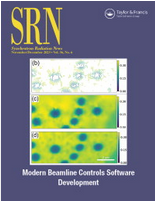Adapting the European Synchrotron to Industry
In the 1990s, the European Synchrotron Radiation Facility (ESRF) emerged as the world’s first third-generation synchrotron, equipped with cutting-edge technologies and state-of-the-art beamline instrumentation.
Over the years, industry utilization of third-generation synchrotrons, such as ESRF‘s high brilliance beamline “BL4” (now ID02), for structural biology data collection has surged, reflecting their pivotal role in driving innovation and fostering industry-academia collaboration.
As the ESRF-EBS upgrade concluded in 2020, transforming it into the first high-energy fourth-generation synchrotron, opportunities for commercial research and innovation soared. To capitalize on these prospects, initiatives like the STREAMLINE project, funded through grants such as Horizon 2020, have been pivotal. STREAMLINE facilitated the development of novel, industry-oriented services, including high-throughput X-ray powder diffraction for materials development. By aligning these developments with industry needs from inception, barriers to adoption have been significantly diminished, fostering a more seamless integration of synchrotron capabilities into industrial workflows.
External funding has enabled not only technological advancements but also essential activities such as marketing, awareness-raising, and training. Through initiatives like STREAMLINE, ESRF has successfully initiated an “ESRF meets Industry” outreach program, utilizing both webinars and face-to-face interactions to engage with diverse industry sectors. Additionally, ESRF’s commitment extends to supporting SMEs through initiatives like TamaTA-INNOV, providing subsidized access and de-risking opportunities to harness synchrotron facilities’ capabilities. Furthermore, as a collaborator with the European Innovation Council, ESRF offers specialized services to EIC beneficiaries, facilitating deeper engagement with deep tech companies and fostering innovation.
Full article on Synchrotron Radiation News here.

Edited by Chiara Facoetti